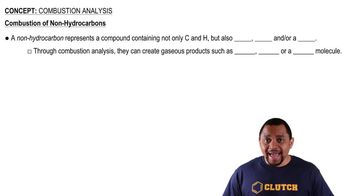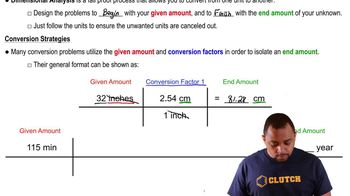Here are the essential concepts you must grasp in order to answer the question correctly.
Combustion Analysis
Combustion analysis is a technique used to determine the elemental composition of organic compounds. In this method, a sample is burned in excess oxygen, converting its elements into gaseous products, primarily CO2 and H2O. By measuring the amounts of these products, one can calculate the moles of carbon and hydrogen in the original compound, which is essential for determining its empirical formula.
Recommended video:
Combustion of Non-Hydrocarbons
Empirical Formula
The empirical formula of a compound represents the simplest whole-number ratio of the elements present in that compound. It is derived from the mole ratios obtained from combustion analysis or other methods. For compounds containing multiple elements, such as carbon, hydrogen, oxygen, and chlorine, the empirical formula provides a foundational understanding of the compound's composition, even if it does not reflect the actual molecular structure.
Recommended video:
Empirical vs Molecular Formula
Elemental Analysis of Chlorine
In combustion analysis, while carbon, hydrogen, and oxygen can be quantified through the measurement of CO2 and H2O, chlorine presents a challenge. Chlorine does not form stable gaseous products during combustion; instead, it typically forms HCl. Therefore, additional analytical techniques, such as titration or ion chromatography, are often required to accurately determine the chlorine content in the compound, which is crucial for calculating the complete empirical formula.
Recommended video:




